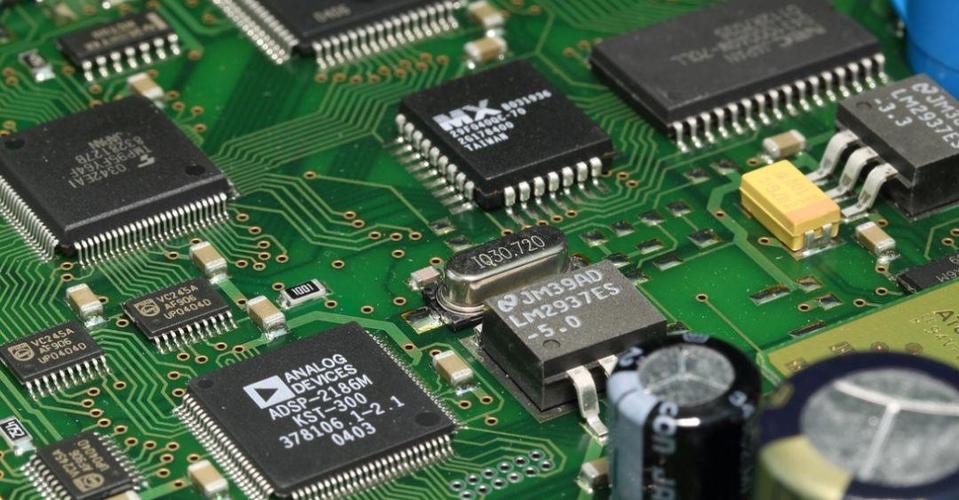Soft and hard board talk about impedance matching and 0 ohm resistance in embedded system PCB design

1. The soft and hard joint board tells you whether the impedance match refers to a suitable combination between the signal source or the transmission line and the load according to the prescription dispensing method.
\According to the impedance of the access form, there are two forms of serial and parallel; according to the frequency of the signal source, the impedance can be divided into two types: low frequency and high frequency.
(1) High-frequency signals generally use serial impedance matching. The resistance value of the series resistor is 20~75Ω, and the resistance volume is proportional to the signal frequency and inversely proportional to the PCB trace width.
In the mosaic system, when the ordinary frequency is greater than 20M and the PCB trace length is greater than 5cm, serial resistance must be added, such as the clock signal, value and address bus signal in the system.
There are two effects of serially matched resistors: attenuation of high-frequency noise and edge overshoot. If the edge of a signal is very steep, it includes a large number of high-frequency components, which will radiate interference, and in addition, it is easy to cause overshoot.
The series resistance and the scattered capacitance of the signal line and the load input capacitance form an RC circuit, which will reduce the steepness of the signal edge. Reduce high frequency reflection and self-excited vibration.
When the frequency of the signal is long, the wavelength of the signal is very short. When the wave jitter is comparable to the length of the transmission line, the reflected signal superimposed on the original signal will change the original signal's style.
If the characteristics of the transmission line indicate that the impedance is not equal to the load impedance (that is, it does not match), reflections will occur at the load end, leading to self-excited vibration. The low-frequency signal of the wiring in the PCB board can be connected directly adjacently, and it is generally unnecessary to add a serial common resistor.
(2) Parallel impedance matching is also called "terminal impedance matching", which is generally used at the input/output interface, and mainly refers to the impedance matching of the transmission cable.
For example, LVDS and RS422/485 use Category 5 twisted-pair cables with a resistance of 100~120Ω at the input end; video file signals use a coaxial cable with a resistance of 75Ω or 50Ω, and use a flat cable with a resistance of 300Ω.
The resistance value of the parallel common resistor is related to the medium of the transmission cable, and has nothing to do with the length. Its main effect is to avoid signal reflection and reduce self-excited vibration. It is worth mentioning that the impedance matching can increase the EMI performance of the system.
In addition to this, in addition to the use of series/parallel resistors, transformers can also be used for impedance transformation to solve the common impedance configuration. Typical examples are Ethernet interfaces, CAN buses, and so on.
2. The utility of 0 ohm resistance
(1) The easiest way is to use as a jumper. If a certain section of the circuit is not needed, just do not solder the resistor directly (it does not affect the appearance).
(2) At the moment when the parameter of the general circuit is not confirmed, it is replaced with 0 ohm. At the moment of actual adjustment, the parameter is confirmed, and then replaced with a specific digital component.
(3) When you want to measure the office current of a certain local circuit, you can remove the 0 ohm resistor and connect an ampere meter, which is so convenient to measure the current.
(4) When wiring, if the cloth does not go through like this, you can also add a 0 ohm resistor to make the jumper effect.
(5) In the high-frequency signal network, it acts as an inductor or a capacitor (it has the same effect as impedance, and 0 ohm resistance also has impedance!). When used as an inductor, it is mainly to solve EMC problems.
(6) Single-point grounding, for example, the single-point docking of the analog ground and the digital ground share the same ground.
(7) Equipped with layout circuits, which can replace jumpers and dial switches. Sometimes users will change the settings randomly, which is easy to cause mistakes. In order to reduce the protection cost, a 0 ohm resistor is used to replace the jumper wire and other welding on the wrench.
(8) Try to use the system adjustment. For example, divide the system into several sections, and separate the power supply and ground between the plates with a 0 ohm resistor. When the power or ground is short-circuited during the adjustment stage, remove the 0 ohm resistor to change the search range.
The functions mentioned above can also be replaced by "magnetic beads". Although 0 ohm resistance and magnetic beads are somewhat similar in function, there are substantial differences. The former has a special characteristic of impedance, and the latter has a special characteristic of inductive reactance. Magnetic beads are commonly used in power and ground networks, and have a filtering effect.
The above is the introduction of the impedance matching and 0-ohm resistance in the PCB design of the embedded system for the soft and hard board. Ipcb is also provided to PCB manufacturers and PCB manufacturing technology.